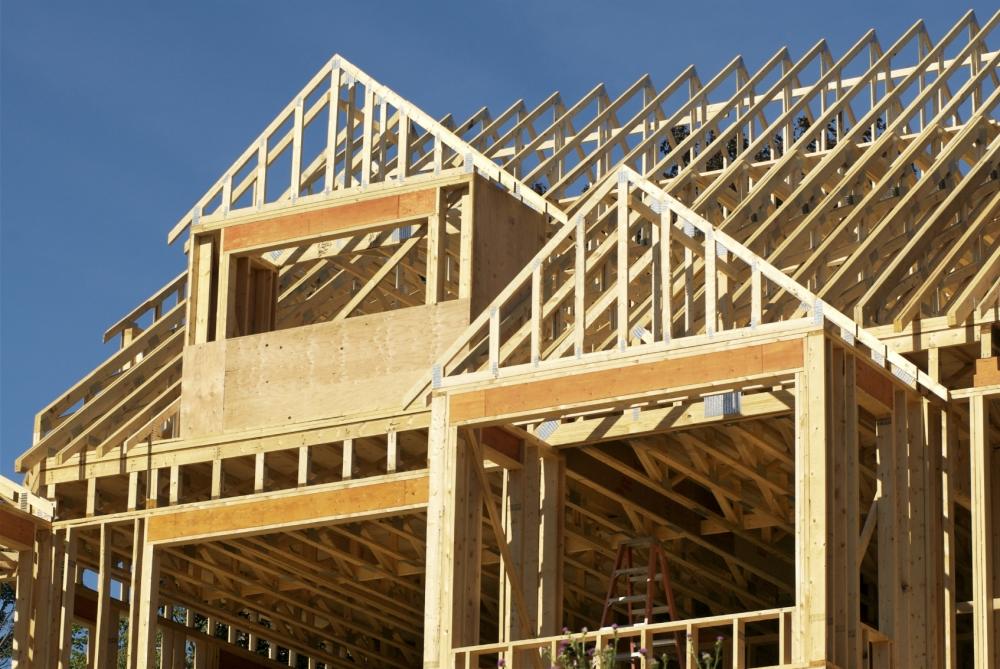
Section Branding
Header Content
Study: Georgia cities and towns may need to adjust zoning for greater housing density
Primary Content
LISTEN: GPB's Peter Biello speaks with Chris Denson of the Georgia Public Policy Foundation about a study of single-family home lot sizes across Georgia.

Georgia’s population is growing, and that growing population needs housing. As builders look for places to build homes, they’ll have to consider zoning laws that mandate a minimum lot size and a minimum size of the house, which could impact how many houses they can build. A new study by the Georgia Public Policy Foundation looked at lot-minimums in counties, cities and towns across Georgia and concluded some might need to change their zoning to allow for greater density. Chris Denson is Director of Policy and Research at the Foundation and co-author of the study. He spoke with GPB’s Peter Biello.
Peter Biello: You used [public] data when it was available and when it couldn't be found, you reached out to the governing body to try to obtain it, and you were mostly successful at finding the data you needed. When it comes to a single-family home, what's the standard you were measuring against?
Chris Denson: For lot sizes, there is actually a standard that is set by the Department of Public Health, and local governments are not required to follow it, but it's a guideline. And so traditionally that measurement for lot size is a 1-acre lot minimum when you have septic and a half-acre lot minimum when you have public water/sewer available. Now, when it comes to home size minimums, that's a little bit trickier to find. There really isn't an industry standard. We reviewed the International Building Codes for that. They don't really take a hard and fast rule. But over the years, it did seem like organizations such as the American Planning Association have traditionally held that 1,000 square feet is a is a benchmark. So that's what we use in the study.
Peter Biello: So for the purposes of this study, you focus just on single-family homes. We'd have to leave multifamily housing to a different study. But when it comes to single-family homes, when you look across the state, where were the greatest minimum lot sizes and where were the smallest?
Chris Denson: One thing we found is there were a couple of counties in Southwest Georgia that have 5-acre lot minimums, and they specifically mentioned that [they were] for agricultural purposes. And one thing that I do want to stress, as we talk about some of these maximums, is that almost entirely across the board, these are not representative of an entire city or entire county. And so there are certain districts that have these very high lot minimums or very high home minimums, but it's not representative of the entire district. We've already received some feedback from people that are saying, "Well, you know, you said here that it's a 2,000-square-foot home, but my home doesn't fit that standard." It could be because it's grandfathered in before that zoning ordinance was passed. Or more likely it's because they are not in the zoning district that we looked at for the study.
Peter Biello: So some areas had a 5-acre minimum. What about the smallest?
Chris Denson: For the most part, nearly every county has a lot size minimum. Some of them are a little bit more exorbitant than others, but for the most part, they kind of adhere to the standard. Home size minimum was something we didn't really find at all. I think we see in the study that there are less than 15% of Georgia's 159 counties that actually have a home size minimum. So in there, there are some that have the really high numbers, you know, a 2,200-square-foot home. But some —Atlanta comes to mind, for example, has a really low house, really low minimum when it comes to home size.
Peter Biello: Yeah, that was 150 square feet, right? To accommodate the tiny homes that were approved for Atlanta?
Chris Denson: Yes, absolutely.
Peter Biello: So just to summarize ... because there are a lot of numbers in this report, that there's quite a bit of variability with both lot sizes and to a lesser extent, there's variability with home sizes. But you're also talking a little bit about how much it costs to build a home. And you use the industry standard — one industry standard — of $150 per square foot to construct a new home. That's not counting land costs or permitting costs. So if there's a minimum home size of 2,000 square feet, you know, you're talking about at least $300,000 to build a new home in a state that needs a lot of new housing. So when a community chooses such a high minimum, what happens to that community? What happens to the communities nearby when people need to live in that area?
Chris Denson: Yeah, absolutely. So on one hand, when it comes to the community, especially when you start talking about zones that have upwards of 2-acre lot minimums or these home minimum standards where 2,000 square feet or higher, you're artificially inflating the cost of what could be built. And so you're increasing the price of the home, but you're also decreasing the amount of housing that can be available — also inflating the price of the home that we're talking about in these situations.
Peter Biello: You write that some municipalities might need to reconsider their minimums, and that made me think of communities near Savannah or Social Circle east of Atlanta, that are going to have large electric vehicle-related plants being built there and large numbers of workers expected to live in those places. Are those the communities that really need to be looking the hardest at their zoning to make sure that they're adequately zoned for the people who may be moving there?
Chris Denson: That is an excellent point. You know, we've noticed that when you had those major economic development projects, like you mentioned, whether it's the Rivian plant or the Hyundai plant or the SK plant, almost immediately upon the announcement of those major economic development projects, the thousands of jobs that they were going to bring into these communities, you started seeing housing moratoriums creep up. And what a housing moratorium is is simply: "We're not allowing for new housing to be built in our community." And, you know, there's a real question there about where these — in these "high-paying jobs" for example, that we hear are touted — where are the people that are going to work these facilities going to live? And so I think there is a real inherent tension here now between what can we do to ensure that Georgia maintains its reputation as a state that's friendly for business, as a growing state economically and population-wise, but also to ensure that we're accommodating all of the influx of population, as well as the influx of jobs that we're creating due to this environment that we have.
Peter Biello: Are there any cities or states doing this well, addressing the problem well, that Georgia could maybe look to for further inspiration for a solution?
Chris Denson: Some states have decided to use large sums of their pandemic relief funds towards affordable housing incentives. I did see that the governor's office recently announced they were doing some targeted incentive funds for workforce housing developments.
Peter Biello: The Rural Workforce Housing Initiative is what that was.
Chris Denson: Exactly, yes. And so from that standpoint, you're seeing a lot of experimentation, I think, at the state level, as people try to address it. I think there's a real opportunity for Georgia to lead the way on this and truly be a leader. This is a real problem. Specifically, I think it's catching a lot of these fast-growing states off guard. It was exacerbated by the pandemic and the outmigration of a lot of states. California and New York are often cited. And then how to deal with this influx of population and ensure that there is adequate housing.

